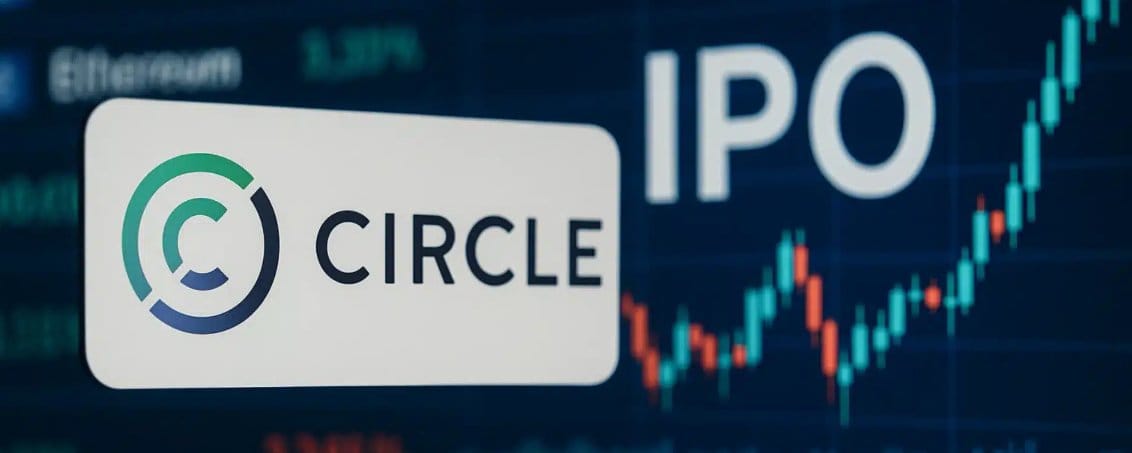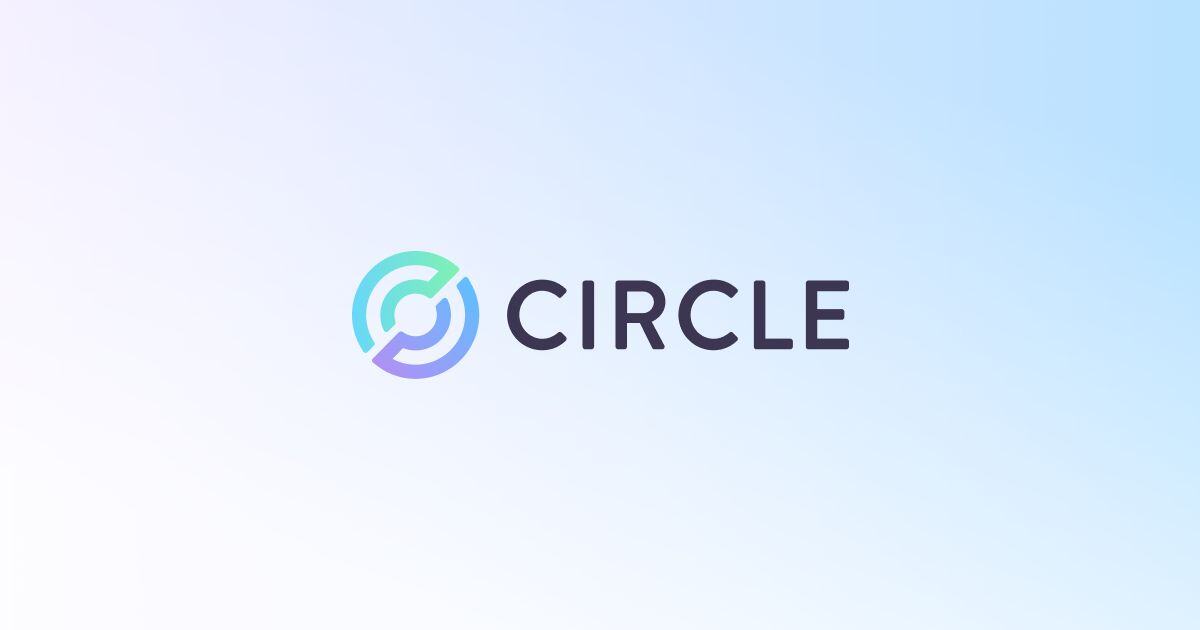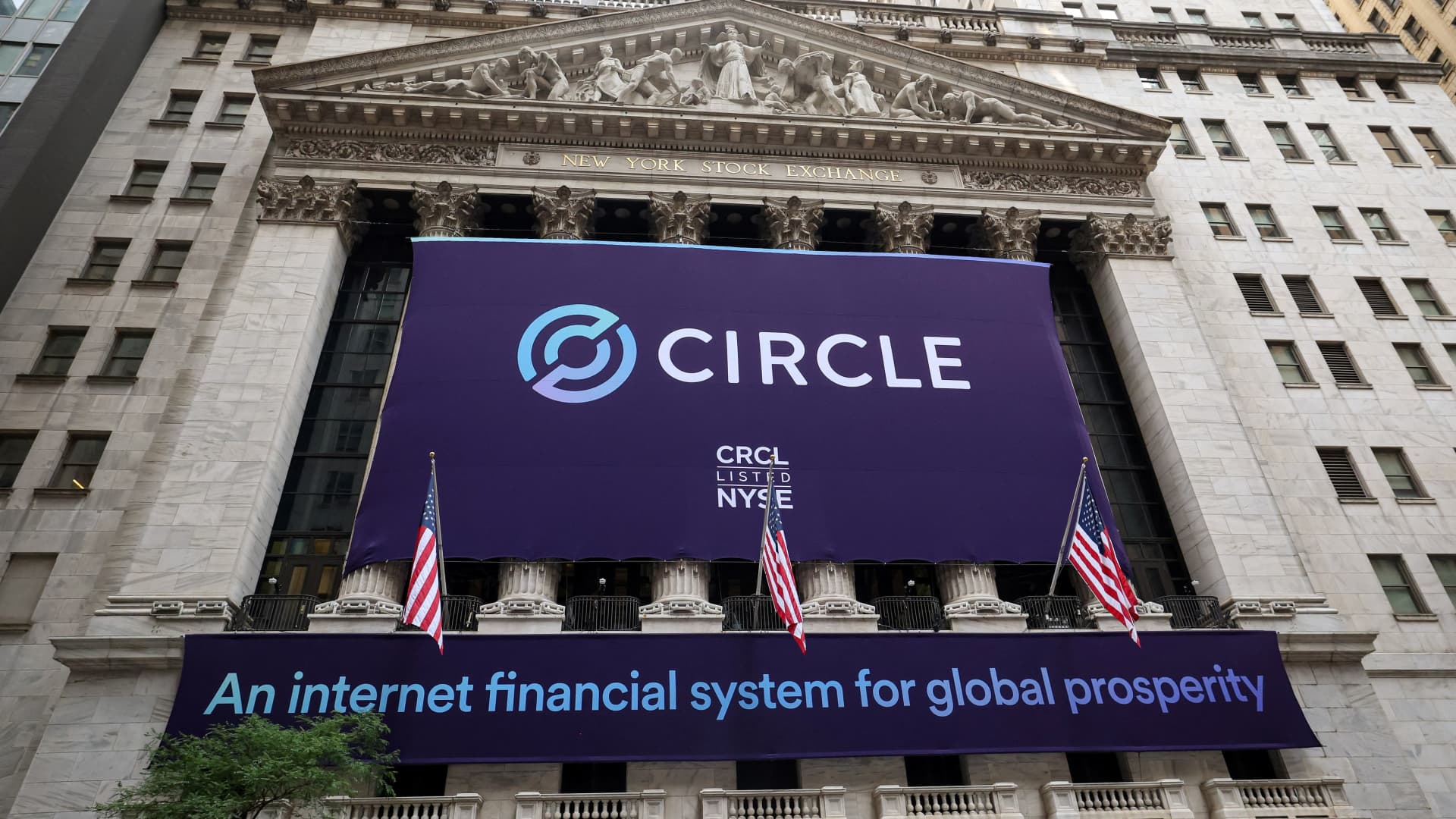Circle’s IPO: A Major Step Forward for Stablecoins and the Crypto Industry

On June 5, 2025, Circle Internet Group—the company behind USD Coin (USDC)—took a big leap into the public markets with its initial public offering (IPO) on the New York Stock Exchange, trading under the symbol CRCL. Shares were priced at $31, well above the expected range, raising just over $1 billion and valuing the company at $6.8 billion. Investor interest was intense. The stock opened at $69 and climbed as high as $103.75 by the end of its debut, closing with a staggering 168% gain.
This move not only marks a big moment for Circle, but also for the wider world of cryptocurrency, where stablecoins like USDC are playing an increasingly central role in global finance.
Circle’s Journey to the Public Markets
Circle was founded in 2013 by Jeremy Allaire and Sean Neville. Originally a general crypto services company, it gradually pivoted toward what it’s now best known for—USDC, a stablecoin pegged 1:1 to the U.S. dollar. As of mid-2025, USDC has become the second-largest stablecoin in the world, with a market cap around $61.5 billion. Only Tether’s USDT is bigger, sitting at roughly $152.7 billion.
This IPO wasn’t Circle’s first attempt to go public. Back in 2021, it tried to merge with a SPAC, Concord Acquisition Corp, at a $4.5 billion valuation that later ballooned to $9 billion. But regulatory slowdowns and the broader crypto crash following the collapse of FTX forced Circle to abandon the deal. That detour cost the company more than $44 million.
Circle regrouped and quietly filed for a traditional IPO in early 2024. By April 2025, its public S-1 filing laid out the financial and operational details. When the IPO officially launched at the end of May, it drew strong interest. Originally planned at 24 million shares priced between $24 and $26, the offering was expanded to 34 million shares and priced at $31 due to heavy demand. About 15 million shares were newly issued by Circle, while the rest came from existing shareholders.
A Business Built on Interest Rates
Circle’s financials reveal a company that, for now, relies almost entirely on interest income. In 2024, it brought in $1.68 billion in revenue—up 16% from the year before—but net income actually fell by nearly 42% to $155.6 million. Just two years earlier, in 2022, Circle had posted a net loss of $761.7 million.
Nearly all of its 2024 revenue—about 99%—came from interest on the reserves backing USDC. These reserves are made up mainly of U.S. Treasuries and cash equivalents. The company’s reliance on interest income means it's extremely sensitive to changes in monetary policy. In its filing, Circle warned that a one-point drop in interest rates could cut its reserve income by $441 million.
Another major cost is its distribution relationship with Coinbase. In 2024, Circle paid Coinbase $908 million to help circulate USDC. Although Circle now manages USDC independently after dissolving the Centre consortium in 2023, it still shares USDC revenue with Coinbase under a 50-50 agreement. Coinbase also holds a minority stake in the company.
Circle has some crypto assets of its own—mostly small stakes. Its holdings include Bitcoin, Ether, Sui, and several other tokens, but these are minor compared to its core business.
Why USDC Stands Out
Stablecoins have become foundational in the crypto world because they offer the price stability of fiat currency with the utility of blockchain. USDC is known for being transparent and backed by high-quality assets. About 90% of its reserves are held in a government money market fund managed by BlackRock, which was valued at over $53 billion as of late May.
This conservative approach gives Circle a competitive edge. Unlike Tether, which has faced criticism for its opaque practices, Circle has worked hard to build trust with regulators and institutions. It was the first company to secure a New York BitLicense back in 2015—a rare and tough-to-get credential.
Circle has continued to expand its regulatory footprint. In 2025, it received approval to operate as a money services provider in Abu Dhabi and became the first stablecoin issuer to get licensed in Japan, where it launched USDC on SBI’s crypto exchange.
Meanwhile, stablecoin regulation is picking up momentum in the U.S. A bipartisan framework is moving through the Senate that would require all stablecoins to be fully backed by dollar assets and fall under clear oversight. Combined with the current administration’s crypto-friendly stance, these developments have improved the outlook for regulated issuers like Circle.
A Strong Market Debut—But Not Without Criticism
Circle’s first day on the public markets was nothing short of explosive. By the end of trading, its market cap had jumped to $16.7 billion—more than double the valuation from its last private funding round in 2021. Major institutional players took notice. ARK Invest committed up to $150 million, and BlackRock reportedly scooped up around 10% of the offering.
But not everyone was cheering. Some analysts, including those at Fortune, pointed out that Circle may have left as much as $1.7 billion on the table by underpricing the IPO. That’s one of the biggest cases of IPO underpricing in recent memory. While the lower initial price helped fuel a strong first-day pop, it also meant less capital for the company and its early investors.
Still, the IPO helped revive a largely dormant tech and crypto IPO market. Circle joins a small group of crypto-native companies trading publicly in the U.S., alongside Coinbase, Marathon Digital, and Riot Platforms. Its successful listing could encourage other crypto firms—like Kraken, Ripple, or Gemini—to take the plunge.
Risks and Unanswered Questions
Despite the early success, Circle has some serious challenges ahead. Its near-total reliance on interest income is risky, especially in a potentially shifting rate environment. If interest rates drop, so will Circle’s earnings. That makes its business model unusually exposed to monetary policy decisions outside its control.
There’s also the matter of rising competition. Tether continues to dominate the market, and more stablecoin projects are popping up. Traditional financial institutions could become formidable rivals too, especially if regulations begin favoring established banks and money services businesses.
Operational risks shouldn’t be overlooked either. During the 2023 Silicon Valley Bank crisis, Circle temporarily lost access to $3.3 billion in reserves. While the company recovered, incidents like that highlight the fragility of even well-managed stablecoin operations.
Some observers are also questioning Circle’s cost structure. Spending nearly $1 billion on USDC distribution raises eyebrows, especially if Circle hopes to improve margins or diversify revenue in the future.
What This Means for Crypto
In many ways, Circle’s IPO marks a turning point—not just for the company, but for the entire crypto space. It signals that a digital asset firm, built around a product that didn’t exist a decade ago, can make it to the public markets with institutional backing and investor enthusiasm.
Circle’s success gives a boost to the idea that stablecoins aren’t just a crypto niche—they’re becoming part of mainstream financial infrastructure. If the company can navigate regulation, diversify revenue, and stay ahead of the competition, it may not just survive in the public markets—it could thrive.
For now, Circle’s debut sends a clear message: stablecoins are here to stay, and Wall Street is paying attention.
References













Comments ()